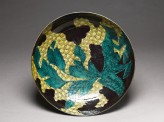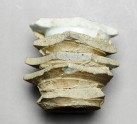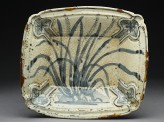Room 37 | Japan 1600-1850 gallery
Discover the arts of the Edo period (1600-1868) from porcelain to lacquer to painting.
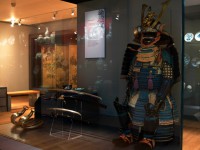
High-fired, hard, watertight stoneware is at the centre of Japan’s ceramic tradition. The technique was brought from the Asian mainland around AD 500, and by the beginning of the Edo period (1600-1868) there were over thirty kiln sites across Japan. These produced stonewares for storage, cooking and for use in the tea ceremony.
In the 1590s, Korean potters introduced the sophisticated new stepped-chamber kiln to Kyushu in western Japan. This kiln achieved better control of the circulation of heat, which allowed porcelain to be made for the first time in Japan.
Arita in western Kyushu was the first centre of porcelain production, but by the early 1800s porcelain was being mass-produced in several parts of Japan and used as everyday household ware.
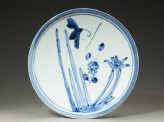 Plate with butterfly and flowers (EA1966.190)
Plate with butterfly and flowers (EA1966.190)
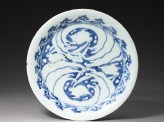 Plate with rabbits and waves (EA1992.69)
Plate with rabbits and waves (EA1992.69)
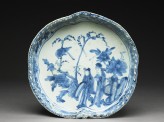 Dish in the form of a peach (EA1987.10)
Dish in the form of a peach (EA1987.10)
Notice
Objects may have since been removed or replaced from a gallery. Click into an individual object record to confirm whether or not an object is currently on display. Our object location data is usually updated on a monthly basis, so contact the Jameel Study Centre if you are planning to visit the museum to see a particular Eastern Art object.
© 2013 University of Oxford - Ashmolean Museum


